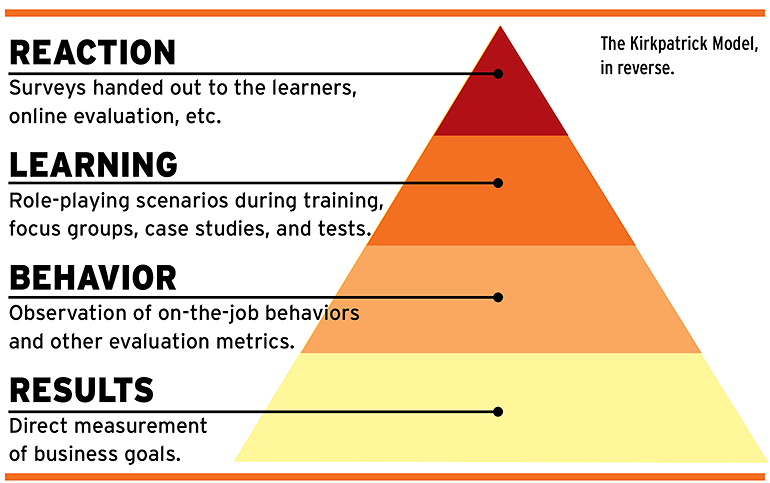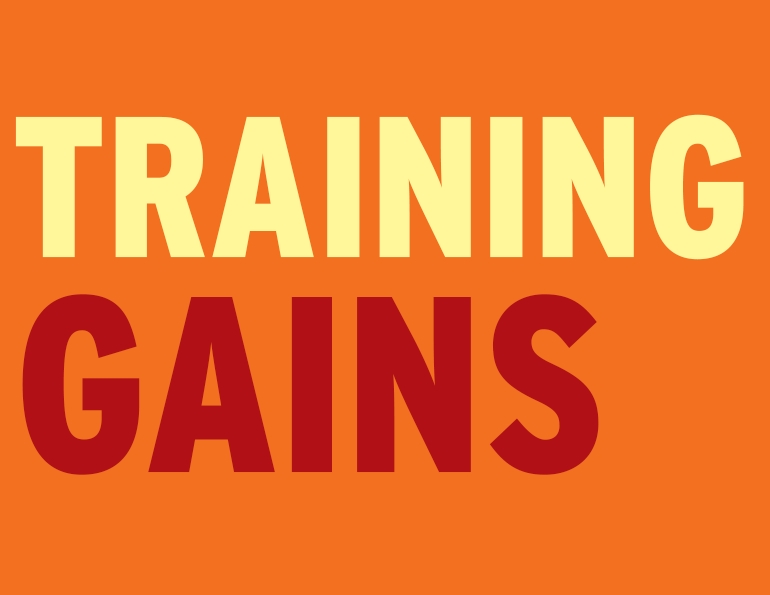Each fiscal year, resort leaders gather in the conference room to slog through budget meetings, ensuring that every dollar is well invested. Difficult compensation decisions are made. Capital projects, mountain maintenance, and improvements to guest-facing amenities are meticulously detailed and justified. When the question of allocating resources for training is raised, though, often the team is unprepared to answer.
Training spend is a critical budgeting conversation, but few at the conference table have solid rationale and data to support their recommendations. At the crux of the issue are two opposing questions:
“What if we spend money training team members and they leave?”
“What if we don’t and they stay?”
These days, spending money on employee training can seem like an unnecessary expense. As an industry insider who has sat at that table, I can tell you when training addresses business needs with demonstrable results, it is an investment. Here, we’ll consider how to approach this complicated conversation with strategic rationale and tactical objectives that measure the return on that investment (ROI).
THE KIRKPATRICK MODEL
To build the business case for staff training, it helps to understand the Kirkpatrick Model, an internationally recognized tool for evaluating and analyzing the results of training and learning programs. It consists of four levels of evaluation: Reaction, Learning, Behavior, and Results. Each successive level of the model represents a more precise measure of the effectiveness of a training program.
Level One, Reaction: Most organizations are familiar with a Level One assessment, which asks questions such as: What was the participant’s initial impression? Was the training helpful? Boring? Confusing? Known by trainers as “happy sheets,” these survey assessments measure participants’ immediate reactions when completed at the end of a course. As a talent development expert, I also use this data to see trends and adjust training content or delivery based on specific feedback.
Level Two, Learning: This level of assessment evaluates if learning transfer occurred. What do participants think they’ll be able to do differently as a result of training? How confident and motivated are they to make changes? A simple method to measure learning is to gather a before and after snapshot of participants’ understanding of content. This can be done through participant self-assessment, quizzes, role-playing, and observation, among other methods.
Level Three, Behavior: This is where managers need to make a deliberate effort to give the learning “legs.” Did the employees remember and use the skills in their day-to-day lives? How much have they applied on the job? If the learning is not being applied, it may be that there is no review, no opportunity to practice, or the employee is not motivated or is lacking confidence. Managers can link recognition to applied learning by publicly praising team members for deploying new skills and behaviors.
Level Four, Results: This level assesses the outcomes, benefits, or results of the training. Examples of measurable training results include increased productivity, reduced turnover, increased guest experience scores, increased team engagement levels, increased sales revenues, fewer sick days and absences, reduced accidents, fewer employee relations issues, and increased retention.

At each level, these assesments provide data vital to measuring the ROI of training after it has been implemented, and the model provides a key framework for developing the business case for the investment ahead of implementation.
LEARNING AND DEVELOPMENT
When budgeting for training, it is necessary to be specific about what it entails. Often, “training” is referred to as one generic initiative when, in fact, there are multiple “learning and development” initiatives needed across departments and organizational levels. Here are five “training” buckets:
1. OJT (on the job training): Typically technical skills, like kitchen prep systems, lift stop, or point-of-sale system use.
2. Orientation and onboarding: Often includes guest experience expectations as well as safety practices and regulatory compliance.
3. Supervisory/managementdevelopment: May include regulatory compliance, legal obligations, hard skills, goal setting, financial reporting, budgeting, computer skills, etc.
4. Soft skills or “power” skills: Up-level self- and situational-awareness; includes emotional intelligence, communication, adaptability, creativity, collaboration, leadership, and time management.
5. Leadership development: May include cultivating trust, decision-making, conflict resolution, mentoring, situational leadership, delegation, and diversity, equity and inclusion practices.
Liz Hicks, talent manager at Mount Bachelor, Ore., designs learning and development opportunities at all five of these levels. “When I hear the term ‘training,’ I think of technical OJT skills,” says Hicks. “As a niche industry that is operationally focused, we’ll also want to pay attention to creating authentic, compassionate, effective leaders who demonstrate the behaviors we expect from team members as they interact with our guests and each other.”
Anyone who has conducted exit interviews will tell you that employees don’t leave companies, they leave managers. The most cited reason for leaving is that the team member didn’t have a good relationship with their boss and wasn’t getting regular communication or feedback.
“Whether leaders are aware of it or not, our team members know when they feel valued,” says Hicks. “Investing in talent development is core to making that happen.” Creating happy, empowered employees is the baseline for creating an internal culture capable of delivering a memorable guest experience.
MEASURING ENGAGEMENT
Delivering an amazing guest or team member experience doesn’t happen by magic—these brand and cultural outcomes are orchestrated. They should also be measured. NPS and intercept surveys can track the guest experience, and engagement surveys, employee NPS surveys, 360 evaluations, upward feedback for managers, and retention data can measure the team member experience.
Matt Troskey, vice president for people and learning at Mt. Hood Meadows, Ore., observes there are numerous reasons the employee (and consequently the guest) experience might suffer. “Team members and managers might perform poorly when expectations aren’t clear, or they don’t have the tools, materials, or equipment to do their jobs well,” he says.
A best practice for measuring employee engagement is Gallup’s 12-item engagement survey, referred to as the “Q12.” Gallup’s employee engagement research is unmatched, and the yes-or-no Q12 survey is a smart tool resorts can use to better understand their employees’ needs. The questions are:
1. I know what is expected of me at work.
2. I have the materials and equipment I need to do my work right.
3. At work, I have the opportunity to do what I do best every day.
4. In the last seven days, I have received recognition or praise for doing good work.
5. My supervisor, or someone at work, seems to care about me as a person.
6. There is someone at work who encourages my development.
7. At work, my opinions seem to count.
8. The mission or purpose of my company makes me feel my job is important.
9. My associates or fellow employees are committed to doing quality work.
10. I have a best friend at work.
11. In the last six months, someone at work has talked to me about my progress.
12. This last year, I have had opportunities at work to learn and grow.
Troskey underscores how important it is to diagnose whether training is the right answer to poor performance or results. “We ask whether [the employee’s] values are aligned to the company culture, or if there is a distraction at home before we prescribe training.” If more training is the solution, he says, “we make sure that our training is interactive and effective. Telling isn’t training.”
To realize a full return on that training, instructional design expert Wendi Barlow, managing director at Barlow Consulting, LLC, suggests involving managers before engaging employees. “Employees need reinforcement of new skills and expected behaviors,” says Barlow. “It can have a negative effect if employees learn new skills that are not recognized or reinforced by their supervisor.”
I’ve led hundreds of workshops on topics ranging from leadership, communication styles, coaching and sales content to practical, hands-on, nuts and bolts execution tactics for supervisors and managers. It isn’t unusual for a participant to ask me at the close of a session, “Did my manager attend this training?” The question implies that the manager either doesn’t model the behavior or doesn’t buy into the idea.
A SIMPLE FORMULA
Let’s revisit that conference room where senior staff are allocating resources for training. To make the business case for a learning and development initiative, first identify the results the organization needs and wants to see, and then develop the training most likely to deliver those results. Essentially, work through the Kirkpatrick Model in reverse.
What is the business case? Begin by asking what needs to change or improve (expressed in specific increases or decreases from X to Y) and by when. Examples:
1. Decrease complaints about a manager who is not modeling expected leadership behavior immediately.
2. Increase sales by x percent by the fourth quarter.
3. Increase yield of non-ticket revenue by x percent each weekend for 16 weeks.
4. Decrease workers comp expense by x percent from November through April.
5. Increase NPS scores by x percent over the 10-day winter holiday period.
Then, identify which behaviors need to be demonstrated to make this happen. Desired behaviors in the case of the above examples might include:
1. Develop empathy, emotional intelligence, and intervention competencies of manager in problematic areas.
2. Build sales campaigns with incentives for achieving targets.
3. Determine which specific products and services in retail, F&B, rental, and snowsports school to cross promote each week for 16 weeks.
4. Audit and track actions that increase awareness and prevention of careless behavior in most-prone departments.
5. Increase consistency of greeting guests and using welcoming language in specific departments.
Next, determine the training, mentoring, or coaching needed to bring about the behavioral change as well as the models for guest experience, selling, or coaching that should be used or reinforced. Training to develop the behaviors in the above examples might include:
1. Step-by-step skills coaching using common late-season scenarios. (See SWEEP formula.)
2. Sales training for x # of employees in x departments.
3. Implementation of formula for strate- gic cross-sales. (See GUIDE formula.)
4. Safety awareness and prevention training focused on body mechanics and daily operating procedures in x departments for x number of employees.
5. Training in expectations and specific phrases and actions to address recurring issues on high volume days.
SWEEP Coaching formula
• State what you observed.
• Wait for a response.
• Explore their rationale.
• Explain the expectation
or policy.• Propose a solution and agree together.
GUIDE Sales formula
• Greet the guest.
• Use open-ended questions to determine needs.
• Inform the guest of products/services that
fulfill the need.• Determine any additional needs or natural links.
• End the interaction with a “Thank You” and
invitation back.
Finally, have a plan to measure staff engagement with the learning. I like to ask learner-centered questions on program objectives, materials, relevance, facilitator knowledge, and delivery. For example:
• What are three adjectives you would use to describe this workshop?
• What did you appreciate most about attending?
• What will you do differently because of participating in this program?
• What other support will you need to successfully implement what you’ve learned?
YOUR NEXT BUDGET PLANNING MEETING
The next time you are in the meeting where resources are being requested and allocated for “talent development,” apply the reverse Kirkpatrick Model to ask strategic questions. This allows your team to understand pain points and prioritize interventions. It provides clarity on leadership’s role in attending and buying into the learning and reinforcing desired behaviors. It also prescribes metrics that justify the investment.
As a result, those whose job it is to vet expenditures will be satisfied that this will be time and money well spent, and you and your team will have become empowered advocates for an aspirational learning culture at your resort.






